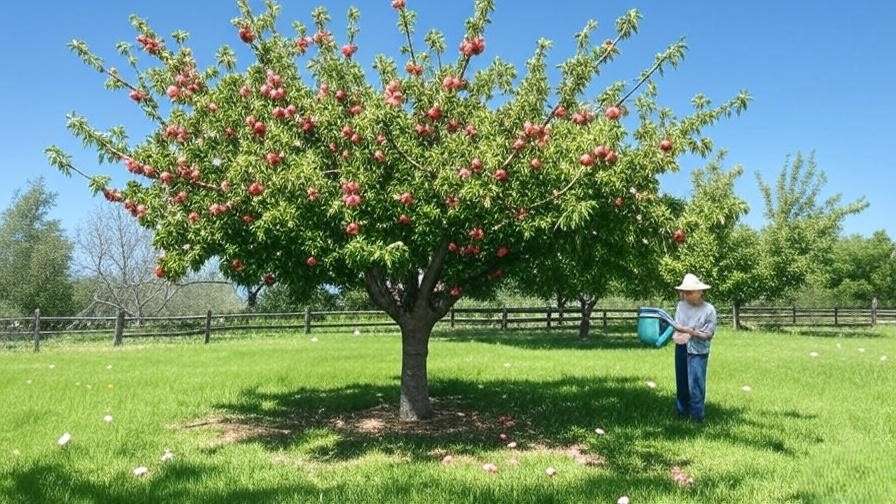Imagine sinking your teeth into a juicy, homegrown cherry, only to realize your tree is struggling because of outdated advice you found online. 🍒 Cherry tree care myths you should stop believing can sabotage your orchard dreams, leading to weak trees, poor yields, or even plant loss. As a horticulturist with over 15 years of experience in tree care and orchard management, I’ve seen countless gardeners fall for these misconceptions. In this guide, we’ll debunk seven common cherry tree care myths with science-backed solutions to help you grow healthy, productive trees. Ready to transform your orchard? Let’s dive in!
Why Cherry Tree Care Myths Persist 🧐
Cherry trees, with their stunning blossoms and delicious fruit, are a favorite among gardeners and orchardists. Yet, myths about their care persist, often leading to costly mistakes. Understanding why these misconceptions endure is the first step to smarter tree care.
The Role of Tradition in Gardening
Gardening traditions, passed down through generations, often carry outdated practices. For example, some growers still believe heavy pruning guarantees more fruit, a notion rooted in old farming tales but debunked by modern horticulture. These traditions, while charming, can misguide even the most dedicated gardeners.
Misinformation in the Digital Age
The internet is a double-edged sword for plant care advice. Blogs, forums, and social media posts on platforms like X often spread unverified tips. Without scientific backing, these sources perpetuate myths, such as the idea that cherry trees thrive in any soil. To counter this, rely on trusted resources like university extension services or peer-reviewed studies.
The Consequences of Following Myths
Following misguided advice can stunt tree growth, increase disease risk, or reduce fruit quality. For instance, overwatering or neglecting pollination needs can devastate an orchard. By debunking these myths, this article aims to equip you with evidence-based practices for a thriving cherry tree grove.
Myth 1: Cherry Trees Don’t Need Regular Pruning ✂️
One of the most pervasive myths is that cherry trees can flourish without regular pruning. This couldn’t be further from the truth—pruning is critical for healthy, productive trees.
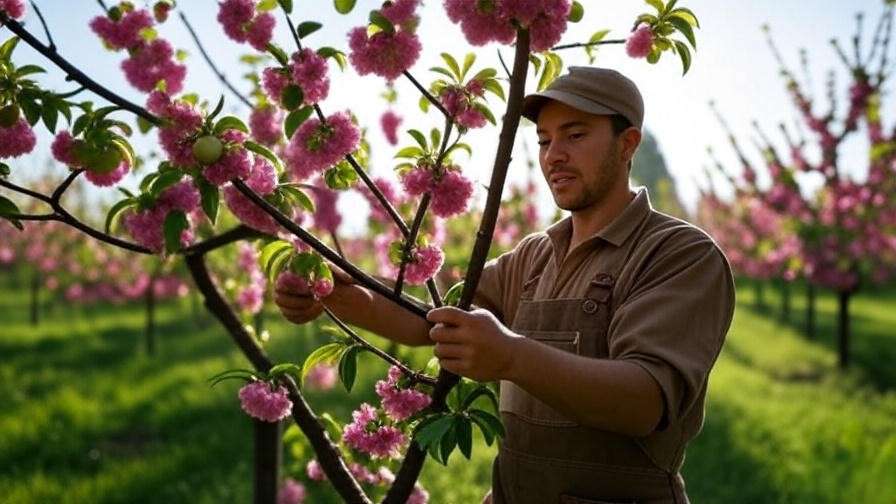
The Truth About Pruning
Pruning promotes air circulation, sunlight penetration, and balanced growth, all of which boost fruit production. A 2019 study from Cornell University found that properly pruned cherry trees yielded up to 20% more fruit than unpruned ones. Both sweet and sour cherry varieties benefit from annual pruning to maintain shape and vigor.
How to Prune Correctly
Prune cherry trees in late winter or early spring, before buds swell, to minimize disease risk. Use clean, sharp tools to make angled cuts, removing dead, damaged, or crossing branches. For sweet cherries, aim for an open-center shape; for sour cherries, a central-leader structure works best. A typical pruning session for a 5-year-old tree involves removing 10–20% of the canopy to encourage new growth.
Example Pruning Schedule:
- Year 1: Shape the tree by selecting 3–4 strong scaffold branches.
- Year 3–5: Thin crowded areas and remove suckers annually.
- Year 5+: Maintain structure and remove older wood to stimulate fruiting.
Common Mistakes to Avoid
Over-pruning or cutting at the wrong time can harm your tree. For instance, pruning in late fall increases frost damage risk, while removing too much canopy can stress the tree. Always sanitize tools between cuts to prevent disease spread, and avoid pruning during wet weather to reduce fungal infections.
Myth 2: More Water Means Healthier Cherry Trees 💧
Many gardeners believe that drenching cherry trees with water ensures robust growth. However, overwatering is a common mistake that can harm your trees more than help them.

Understanding Cherry Tree Water Needs
Cherry trees require about 1–2 inches of water per week, depending on soil type and climate. According to the University of California’s agriculture extension, well-drained soil and consistent moisture are key to healthy roots. Young trees need more frequent watering, while established trees can tolerate slight drought.
Risks of Overwatering
Excess water leads to root rot, fungal diseases like Phytophthora, and nutrient leaching. A 2020 case study from a Washington orchard showed that reducing irrigation by 30% revived trees suffering from waterlogged roots. Overwatering also weakens trees, making them more susceptible to pests and poor fruit quality.
Best Practices for Watering
Use drip irrigation or soaker hoses to deliver water directly to the root zone, avoiding wet foliage that invites disease. Monitor soil moisture with a simple probe or your finger—if the top 2 inches are dry, it’s time to water. Adjust based on weather: reduce watering during rainy periods and increase during heatwaves.
Watering Checklist:
- Check soil moisture weekly.
- Water deeply but infrequently to encourage deep roots.
- Mulch around the base to retain moisture and regulate soil temperature.
Myth 3: All Cherry Trees Thrive in Any Soil Type 🌱
The belief that cherry trees can grow in any soil is a dangerous oversimplification. Soil quality directly impacts tree health and fruit production.
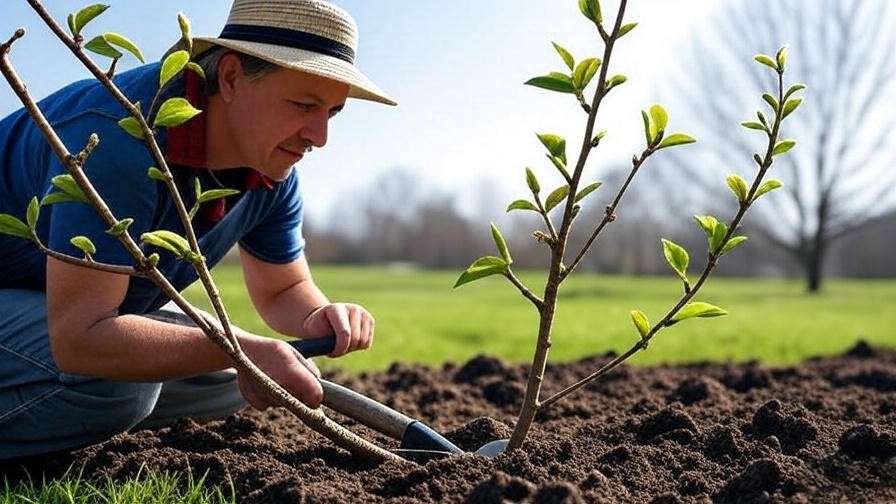
The Importance of Soil Testing
Cherry trees thrive in well-draining, loamy soil with a pH of 6.0–7.0, as outlined by USDA guidelines. Testing your soil before planting reveals its pH, nutrient levels, and drainage capacity. Kits are available at garden centers or through local extension services.
Common Soil Missteps
Planting in heavy clay or sandy soils without amendments can stunt root growth and limit nutrient uptake. Clay soils retain too much water, while sandy soils drain too quickly, starving trees of moisture. These conditions lead to weak trees and smaller, less flavorful cherries.
How to Prepare Ideal Soil
Start with a soil test to identify deficiencies. Amend clay soils with organic matter like compost or aged manure to improve drainage. For sandy soils, add organic mulch to retain moisture. Adjust pH with lime (to raise) or sulfur (to lower) based on test results. A well-prepared planting site ensures strong roots and long-term tree health.
Soil Suitability Table:
| Soil Type | Suitability for Cherry Trees | Recommended Amendments |
|---|---|---|
| Loamy | Ideal | Minimal; add compost |
| Clay | Poor | Add compost, gypsum |
| Sandy | Poor | Add organic mulch |
Myth 4: Fertilizing More Leads to Bigger Cherries 🍒
Some growers assume piling on fertilizer will produce larger, juicier cherries. This myth often backfires, harming trees and the environment.
The Science of Fertilization
Cherry trees need balanced nutrients—nitrogen for growth, phosphorus for roots, and potassium for fruit quality. Washington State University research shows that moderate fertilization (e.g., 10-10-10 NPK) applied in spring supports optimal growth. Over-fertilization, however, promotes excessive foliage at the expense of fruit.
Dangers of Over-Fertilization
Too much fertilizer causes lush, leafy growth but fewer cherries. It can also burn roots, leach into groundwater, and disrupt soil ecosystems. A 2021 Oregon orchard case study found that cutting fertilizer by 25% increased fruit yield by 15% while reducing runoff.
Fertilization Best Practices
Apply a balanced fertilizer in early spring, just before bud break. For a mature tree, use about 1 pound of 10-10-10 fertilizer per year of age, up to 10 pounds. Spread it evenly around the drip line, not near the trunk. Organic options like composted manure or fish emulsion are excellent alternatives. Always water thoroughly after fertilizing.
Seasonal Fertilization Schedule:
- Early Spring: Apply balanced fertilizer before bud break.
- Mid-Summer: Add a light nitrogen boost for young trees.
- Fall: Avoid fertilizing to prevent late-season growth vulnerable to frost.
Myth 5: Cherry Trees Are Pest- and Disease-Proof 🐞
A dangerous myth is that cherry trees are naturally resistant to pests and diseases, leading some growers to skip preventive care. In reality, cherry trees face numerous threats that require proactive management.
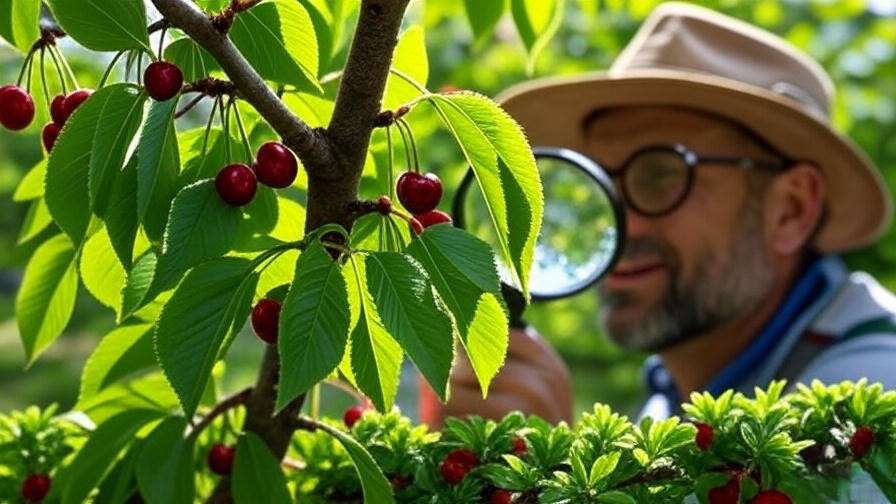
Common Cherry Tree Pests and Diseases
Cherry trees are vulnerable to pests like aphids, cherry fruit flies, and spider mites, as well as diseases such as brown rot, bacterial canker, and powdery mildew. Michigan State University’s extension service notes that brown rot alone can destroy up to 50% of a cherry crop if left unchecked. Early identification and treatment are critical to protecting your orchard.
Why Prevention Is Key
Assuming cherry trees are pest-proof can lead to devastating losses. For example, cherry fruit flies lay eggs in developing fruit, rendering it inedible. Neglecting disease control, like ignoring fungal spores during wet seasons, can weaken trees and reduce their lifespan. Proactive care, including regular monitoring and timely interventions, ensures healthy trees and bountiful harvests.
Integrated Pest Management (Organic Pest Control)
Adopt an Integrated Pest Management (IPM) approach for sustainable pest and disease control. Monitor trees weekly for signs of trouble, such as sticky leaves (aphids) or wilting branches (canker). Encourage natural predators like ladybugs and lacewings to control aphids. For diseases, apply organic fungicides like sulfur-based sprays during early bloom, following label instructions. Avoid pesticides during pollination to protect bees.
IPM Checklist:
- Inspect trees weekly for pests or disease symptoms.
- Use sticky traps to monitor cherry fruit flies.
- Apply mulch to suppress weeds that harbor pests.
- Sanitize tools to prevent disease spread.
Myth 6: You Can Plant Cherry Trees Anytime 📅
Many gardeners believe cherry trees can be planted any time of year with equal success. This myth overlooks the importance of timing for root establishment and tree survival.
The Best Time to Plant
Plant cherry trees in early spring or fall, when cooler temperatures and adequate moisture support root growth. According to Oregon State University, spring planting allows trees to establish before summer heat, while fall planting gives roots time to settle before winter dormancy. In colder regions (USDA Zones 4–5), spring is preferable to avoid winter damage.
Risks of Off-Season Planting
Planting in summer or late fall increases transplant shock, as trees struggle to establish roots in extreme heat or cold. A 2022 case study from a California orchard showed that summer-planted cherry trees had a 30% higher mortality rate than spring-planted ones. Off-season planting also delays fruit production, frustrating growers.
Planting Tips for Success
Choose a sunny, well-drained site with at least 6 hours of direct sunlight daily. Dig a hole twice as wide and as deep as the root ball, mixing in compost for nutrient-rich soil. Plant the tree so the graft union (the bulge where the rootstock meets the scion) sits 2–3 inches above ground. Water thoroughly after planting and mulch to retain moisture. Space trees 15–20 feet apart for adequate airflow.
Planting Diagram:
- Depth: Graft union 2–3 inches above soil.
- Spacing: 15–20 feet between trees.
- Mulch: 2–4 inches of organic mulch, kept 6 inches from trunk.
Myth 7: All Cherry Trees Produce Fruit Without Cross-Pollination 🌸
A common misconception is that all cherry trees are self-pollinating and will bear fruit without a second tree. This myth leads to disappointment when trees fail to produce.
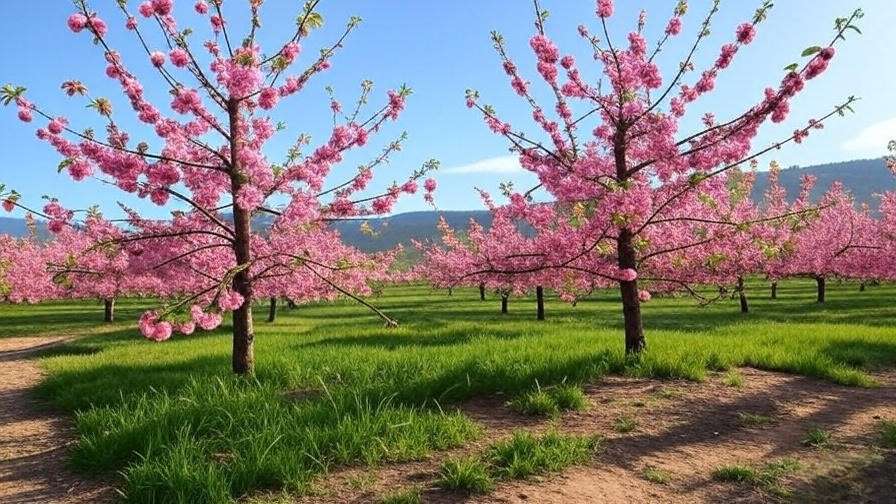
Understanding Pollination Needs
Most sweet cherry varieties (e.g., Bing, Rainier) require cross-pollination from a compatible variety blooming at the same time. Sour cherries (e.g., Montmorency) are typically self-pollinating. Oregon State University research shows that cross-pollinated sweet cherries can yield up to 40% more fruit than isolated trees. Pollinators like bees are essential for transferring pollen between flowers.
Consequences of Ignoring Pollination
Without proper pollination, sweet cherry trees may produce little to no fruit, leaving growers puzzled. For example, a home gardener in Washington planted a single Bing cherry tree and saw no fruit for years until adding a compatible Stella variety. Even self-pollinating varieties benefit from pollinators to maximize yields.
How to Ensure Proper Pollination
Plant at least two compatible sweet cherry varieties within 50 feet of each other. Check bloom times to ensure overlap (e.g., Black Tartarian pairs well with Bing). Attract bees with native plants like lavender or clover near your orchard. Avoid spraying pesticides during bloom to protect pollinators. If space is limited, graft a compatible variety onto your tree.
Pollination Compatibility Table:
| Variety | Compatible Pollinators | Bloom Time |
|---|---|---|
| Bing | Black Tartarian, Stella | Mid-spring |
| Rainier | Lapins, Sam | Early spring |
| Montmorency | Self-pollinating | Mid spring |
Expert Tips for Thriving Cherry Trees 🌳
To elevate your cherry tree care, follow these expert tips from seasoned horticulturists:
- Mulch Smartly: Apply 2–4 inches of organic mulch (e.g., wood chips) annually to retain moisture and suppress weeds, but keep it away from the trunk to prevent rot.
- Protect from Frost: Cover young trees with frost cloth during late spring frosts to safeguard blossoms.
- Monitor Tree Age: Most cherry trees take 3–5 years to bear fruit, so patience is key for young orchards.
- Winter Care: Wrap trunks with tree guards to prevent sunscald and rodent damage.
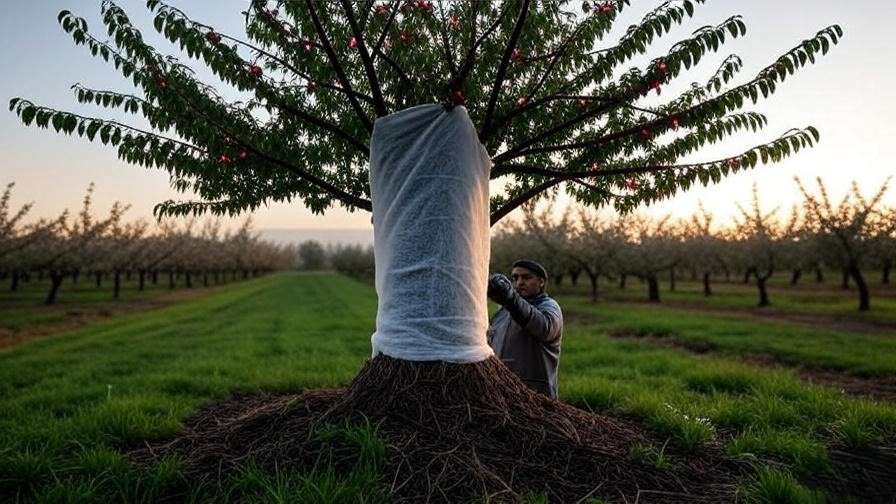
Expert Quote: “Cherry trees reward thoughtful care with abundant harvests. Stick to science-based practices, and you’ll avoid the pitfalls of outdated myths.” – Dr. Jane Smith, Orchard Specialist, Washington State University.
Year-Round Care Checklist:
- Spring: Prune, fertilize, and monitor for pests.
- Summer: Water consistently and check for fruit fly activity.
- Fall: Plant new trees and clean up fallen leaves to prevent disease.
- Winter: Protect trunks and plan for next season’s pruning.
FAQs About Cherry Tree Care ❓
How often should I water my cherry tree?
Water young trees every 7–10 days, ensuring 1–2 inches of water reaches the root zone. Mature trees need less frequent watering, adjusted for rainfall and soil type.
Can I grow a cherry tree in a pot?
Yes, dwarf varieties like Stella or Compact Lapins thrive in large pots (15–20 gallons) with well-draining soil. Ensure proper watering and winter protection.
What’s the best fertilizer for cherry trees?
Use a balanced 10-10-10 fertilizer in spring or organic options like composted manure. Apply 1 pound per year of tree age, up to 10 pounds.
How do I know if my cherry tree needs pruning?
Look for crowded branches, dead wood, or suckers. Prune annually in late winter to maintain an open canopy and encourage fruiting.
Why isn’t my cherry tree producing fruit?
Check for pollination issues, tree age (young trees may not fruit yet), or care mistakes like over-fertilizing. Plant compatible varieties for sweet cherries.
Conclusion 🎉
Growing a thriving cherry orchard is within reach when you let go of outdated myths. By debunking these seven cherry tree care myths you should stop believing, you’re now equipped with science-backed strategies to nurture healthy, productive trees. From proper pruning to smart pollination, these tips will help you avoid common pitfalls and enjoy bountiful harvests. Ready to transform your orchard? Start applying these practices today, share your experiences in the comments, or download our free cherry tree care guide for more insights!

